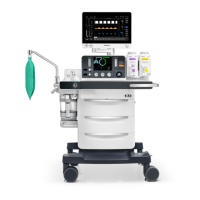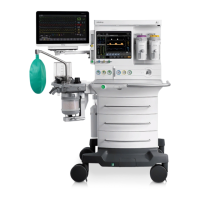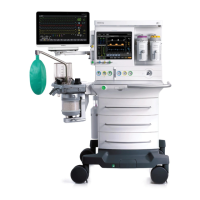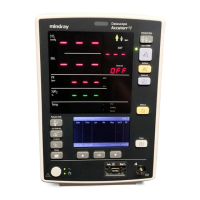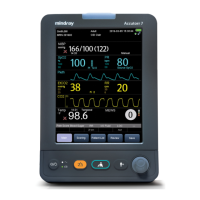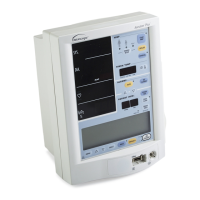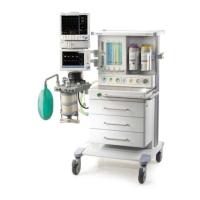Malignant Hyperthermia Causes, Effects and Treatment Preparation for Malignant Hyperthermia Susceptible Patients
F - 2 046-004667-00 A7™ Operating Instructions
F.1 Malignant Hyperthermia Causes, Effects and
Treatment
Malignant Hyperthermia (MH) is an uncommon inherited, life-threatening pharmacokinetic skeletal
muscle disorder involving the dysregulated myoplasmic Ca
2+
, hypercontracture, and
hypermetabolism. Triggering factors include exposure to potent volatile anesthetic gases and
depolarizing muscle relaxants.
1-4
The disorder is characterized by skeletal muscle hypermetabolism, which is related to an
uncontrolled release of calcium from skeletal muscle sarcoplasmic reticulum. These results in
increased carbon dioxide production, increased core temperature, and generalized muscle rigidity
with resultant rhabdomyolysis, acidosis, and hyperkalemia. If untreated, MH may lead to cardiac
arrhythmia, multiorgan system failure, and death.
2,3
MH has had a reported mortality rate decrease from 70%-80% to less than 5% if preventive measures
and effective management are adopted.
2
The early therapy requires immediate discontinuation of all
the triggering agents, adequate oxygenation and ventilation, institution of aggressive cooling
measures, administration of dantrolene sodium, and appropriate treatment for hyperkalemia.
Ultimately, the only effective treatment for an MH crisis is the intravenous administration of
dantrolene sodium and supportive therapy to combat the symptoms.
1,2
F.2 Malignant Hyperthermia Washout
To prevent MH in susceptible patients or to treat MH occurring during inhalational anesthesia, all
inhalational anesthetics should be removed from the anesthesia machine. Avoidance of potent vapor
anesthetics, such as Sevoflurane, Isoflurane or Desflurane,
4
in patient cases is more challenging,
based on the complex newer generation anesthesia machines and breathing circuits which retain
anesthetic vapors long after discontinuation. The ultimate goal is to eliminate the residual anesthetic
vapor concentration within the breathing system. The recommended instructions for clearing
residual anesthetic gases include removal or disabling of vaporizers, flushing the machine using the
ventilator with a fresh gas flow rate more than 10 L/min, replacement of the carbon dioxide
absorbent and anesthesia circuit.
1,3
F.3 Washout Procedure for Malignant
Hyperthermia Susceptible Patients with A7
Anesthesia Delivery Systems
The minimum inhaled concentration for triggering an episode of MH is unknown. Studies assumed a
trace concentration of inhalational anesthetics below 5 ppm to be safe.
5-8
the following steps are
recommended to prepare a A7 anesthesia system for an MH-susceptible patient.
1. Turn off and remove all the vaporizers from the anesthesia system to prevent their
inadvertent use.
2. Remove the carbon dioxide absorbent, breathing bag and the entire patient breathing
circuit, filters, sampling line, water trap, and airway adapter and replace with new circuit and
parts, connect a new breathing bag or test lung to the patient Y-piece.
3. Ventilate for a minimum of 40 minutes using mechanical ventilation with the following
settings, 700 ml tidal volume, I:E ratio of 1:2, 12 breaths/minute, PEEP Off, and oxygen fresh
gas flow rate of 15 L/min.
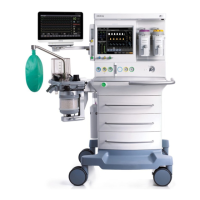
